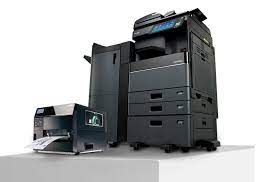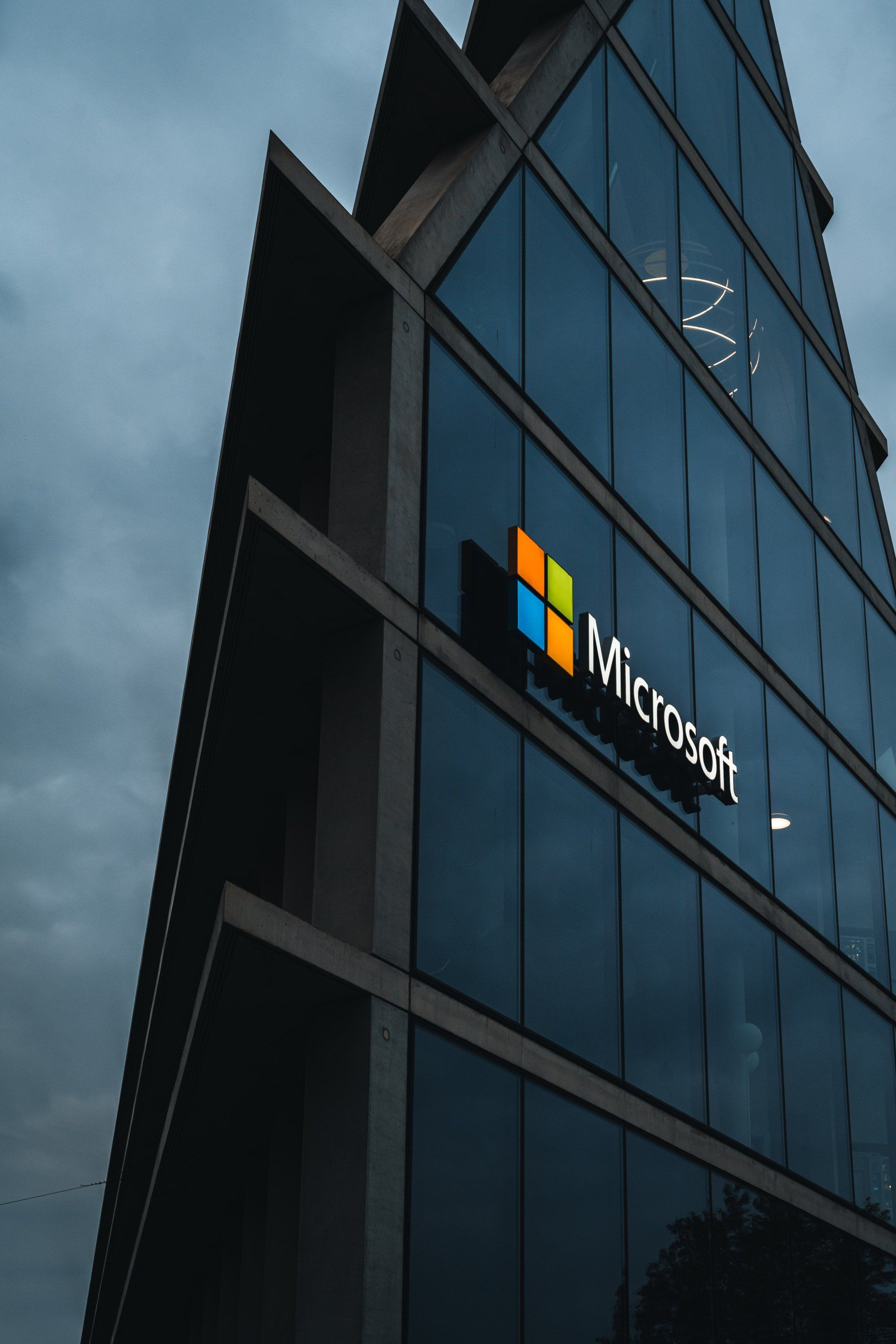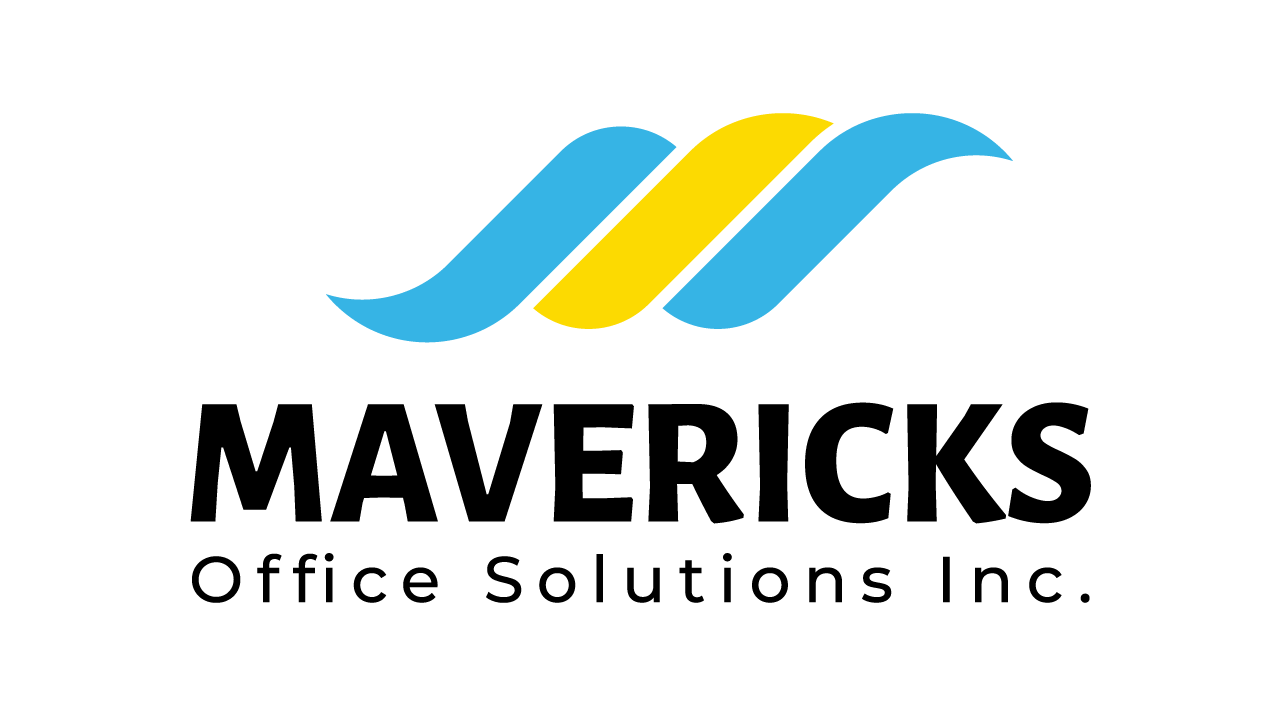Blog
Blog

By Jeffrey Bish
•
07 Feb, 2024
In the digital age, the transition from physical to electronic storage has become increasingly common and advantageous. Whether you're a small business owner, a freelancer, or simply looking to streamline your personal document management, the benefits of digitizing paper documents are undeniable. Not only does it save physical space, but it also enhances accessibility, security, and organization. In this blog post, we'll delve into the steps and best practices for effectively storing and archiving paper documents electronically. Step 1: Preparing Your Documents Before diving into the digital realm, it's essential to prepare your paper documents for scanning. This involves sorting through your files, removing any unnecessary documents, and ensuring that the papers are clean and free from tears or creases. Organize them into categories or folders to facilitate the digitization process and future retrieval. Step 2: Choose the Right Tools Invest in a reliable scanner or multifunction printer with scanning capabilities. Depending on your volume of documents and budget, you can opt for a desktop scanner, a portable scanner, or even utilize the scanning features of your smartphone with dedicated apps. Additionally, consider investing in Optical Character Recognition (OCR) software, which converts scanned images into searchable and editable text, further enhancing the usability of your digital documents. Step 3: Scanning and Digitization Once you have your documents and scanning tools ready, it's time to start digitizing. Follow these tips for efficient scanning: Scan in batches: Group similar documents together and scan them in batches to streamline the process. Use appropriate settings: Adjust scan settings such as resolution and file format according to the type of document. For text-heavy documents, a higher resolution and PDF format are preferable, while images may require lower resolutions and JPEG format. Organize as you scan: Create digital folders mirroring your physical filing system to maintain consistency and ease of navigation. Step 4: Organizing and Naming Conventions Effective organization is key to managing your digital documents efficiently. Establish a clear naming convention for files and folders that provides descriptive information and allows for easy retrieval. Consider including dates, categories, and keywords in file names to facilitate searchability. Utilize subfolders to further categorize documents and maintain a hierarchical structure. Step 5: Backup and Storage Ensuring the security and integrity of your digital documents is paramount. Implement a robust backup strategy to safeguard against data loss. Cloud storage solutions such as Google Drive, Dropbox, or OneDrive offer convenient and reliable options for storing and accessing your documents from anywhere with an internet connection. Additionally, consider implementing redundant backups on external hard drives or other physical storage devices for added protection. Step 6: Maintain Regular Maintenance Maintain a regular schedule for reviewing and purging outdated or redundant documents from your digital archive. Periodically check for duplicates, update file names or metadata as necessary, and ensure that your backup systems are functioning correctly. Regular maintenance helps prevent clutter and ensures that your digital archive remains organized and efficient. Conclusion Digitizing paper documents offers numerous benefits, including space savings, improved accessibility, and enhanced security. By following these steps and best practices, you can effectively store and archive your paper documents electronically, streamlining your document management processes and enabling greater productivity and peace of mind in the digital age. Embrace the transition to digital and unlock the full potential of your document management system.

By Jeffrey Bish
•
21 Dec, 2023
In the ever-evolving landscape of business communication, Mavericks Office Solutions has once again stepped into the spotlight with its groundbreaking product – Mavericks UCaaS (Unified Communications as a Service). This innovative solution is not just a communication tool; it's a paradigm shift in the way customers perceive and utilize their communication devices both within and outside the office. In this blog post, we will explore the transformative features of Mavericks UCaaS and how it is redefining the communication experience for customers. The Essence of Mavericks UCaaS: Mavericks UCaaS is more than just a suite of communication tools; it's a comprehensive solution that unifies various communication channels into a seamless and integrated platform. From voice calls and video conferencing to instant messaging and collaboration tools, Mavericks UCaaS brings it all under one umbrella. Anywhere, Anytime Communication: Mavericks UCaaS liberates communication from the confines of the office walls. With the power of cloud technology, users can connect and collaborate from anywhere, at any time. This flexibility is especially crucial in today's dynamic work environment, where remote and mobile work have become integral components of business operations. Unified Platform for Seamless Collaboration: The days of juggling multiple communication tools are over. Mavericks UCaaS integrates voice, video, messaging, and collaboration tools into a unified platform. This not only streamlines communication but also enhances collaboration by providing a consistent user experience across different channels. Scalability for Growing Businesses: Mavericks UCaaS is designed with scalability in mind. As businesses grow, the communication needs evolve, and Mavericks ensures that its UCaaS solution can scale accordingly. This scalability is crucial for businesses of all sizes, from startups to enterprises. Enhanced Productivity with Collaboration Tools: Mavericks UCaaS isn't just about communication; it's about boosting productivity through integrated collaboration tools. Features such as document sharing, real-time editing, and project management streamline workflows and contribute to a more efficient work environment. Cost-Efficiency and Predictable Billing: Embracing Mavericks UCaaS eliminates the need for costly infrastructure and maintenance associated with traditional communication systems. With a predictable subscription-based billing model, businesses can manage their communication expenses more effectively, allowing for better budget control. Robust Security Measures: Security is a top priority for Mavericks Office Solutions. Mavericks UCaaS employs robust security measures to ensure the confidentiality and integrity of communication data. This is particularly important in an era where data breaches and cyber threats are prevalent concerns. User-Friendly Interface: Mavericks UCaaS is designed with the end-user in mind. The intuitive interface makes it easy for users to navigate and utilize the full suite of communication and collaboration tools without the need for extensive training. Conclusion: Mavericks UCaaS is not just a product; it's a game-changer in the realm of business communication. By unifying communication channels, enabling flexible and remote work, and providing a comprehensive suite of collaboration tools, Mavericks is setting a new standard for how businesses connect and collaborate. As organizations continue to adapt to the changing landscape of work, Mavericks UCaaS stands as a beacon of innovation, transforming the way customers think about and use communication devices both within and outside the office.

By Jeffrey Bish
•
21 Dec, 2023
In an era where digital threats loom large, businesses and individuals alike seek reliable network solutions that prioritize security without compromising performance. Ubiquiti Networks has made a name for itself in the networking industry, and its UniFi Dream Machine (UDM) products have garnered attention for their comprehensive approach to network security. In this blog post, we'll delve into the key security features of Ubiquiti UDM products and explore why they stand out in the realm of secure networking solutions. Unified Threat Management (UTM): Ubiquiti UDM products come equipped with a Unified Threat Management system, which combines multiple security features into a single, integrated platform. This includes firewall, intrusion detection and prevention, VPN (Virtual Private Network), and more. The UTM approach ensures that various security measures work together seamlessly to protect against a wide range of threats. Deep Packet Inspection: Deep Packet Inspection (DPI) is a crucial aspect of UDM security. It involves the thorough examination of data packets passing through the network, allowing the system to identify and block potentially malicious content. UDM's DPI capabilities contribute to proactive threat detection and prevention. Regular Firmware Updates: Security is an ongoing process, and Ubiquiti understands this well. UDM products receive regular firmware updates that not only introduce new features and improvements but also address any known vulnerabilities. Keeping the firmware up to date is a fundamental aspect of maintaining a secure network environment. Advanced Encryption Standards: Ubiquiti UDM products support the latest encryption standards, ensuring that data transmitted over the network is protected from unauthorized access. Features like WPA3 encryption for Wi-Fi connections contribute to the overall robustness of the network security. User Authentication and Access Control: UDM products provide robust user authentication mechanisms and access control features. This includes the ability to create user accounts with specific permissions, ensuring that only authorized individuals have access to critical network settings and resources. Secure Remote Access: With the increasing trend of remote work, secure remote access to the network becomes paramount. Ubiquiti UDM products offer VPN capabilities, allowing users to connect to the network securely from external locations. This is especially valuable for businesses with geographically dispersed teams. Threat Intelligence Feeds: Ubiquiti leverages threat intelligence feeds to enhance the UDM's ability to identify and respond to emerging threats. By staying informed about the latest cybersecurity trends, UDM products can adapt their security measures to effectively counter evolving risks. Conclusion: In a digital landscape fraught with cybersecurity challenges, Ubiquiti UDM products stand out as exemplars of robust and comprehensive network security. From Unified Threat Management and Deep Packet Inspection to regular firmware updates and advanced encryption standards, UDM products prioritize safeguarding your network without compromising performance. As businesses and individuals continue to navigate the complexities of the digital world, investing in a secure networking solution like Ubiquiti UDM proves to be a prudent choice for those who value the integrity and confidentiality of their data.

By Jeffrey Bish
•
21 Dec, 2023
In the ever-evolving world of business technology, the decision to lease office equipment, such as copiers, is a strategic choice that can significantly impact a company's bottom line. Two common types of copier leases are the Fair Market Value (FMV) lease and the $1 Buyout lease. In this blog post, we will explore the characteristics of each lease type and discuss when it's appropriate to choose one over the other. Understanding FMV Copier Leases: What is an FMV Copier Lease? An FMV copier lease is a type of lease agreement where the lessee pays for the depreciation of the copier's value over the lease term. At the end of the lease, the lessee has the option to purchase the copier at its fair market value, return it, or upgrade to a newer model. Advantages of FMV Copier Leases: Lower monthly payments: FMV leases often come with lower monthly payments compared to $1 Buyout leases. Flexibility: At the end of the lease, businesses can choose to upgrade their equipment to newer models without the burden of ownership. When to Choose an FMV Copier Lease: Technology Upgrades: If your business values staying at the forefront of technology and frequently requires equipment upgrades, an FMV lease may be the better choice. Budget Constraints: Businesses with tight budgets may find FMV leases appealing due to their lower monthly payments. Understanding $1 Buyout Copier Leases: What is a $1 Buyout Copier Lease? In a $1 Buyout lease, the lessee agrees to make fixed monthly payments throughout the lease term. At the end of the lease, the lessee has the option to purchase the copier for a nominal fee, usually $1. Advantages of $1 Buyout Leases: Ownership: Choosing a $1 Buyout lease means the lessee will own the copier at the end of the term, making it a good option for businesses that plan to keep the equipment for an extended period. When to Choose a $1 Buyout Copier Lease: Long-Term Usage: If your business anticipates using the copier for an extended period and plans to keep it after the lease term, a $1 Buyout lease may be the more cost-effective option. Stability in Technology Needs: If your business's copier requirements are stable and less likely to change rapidly, a $1 Buyout lease provides the advantage of ownership without frequent upgrades. Making the Decision: Evaluate Your Business Needs: Consider your business's current and future copier needs, budget constraints, and preferences for technology upgrades. Assess Financial Implications: Compare the total cost of ownership for both types of leases, factoring in monthly payments, potential upgrades, and the fair market value at the end of an FMV lease. Consult with Experts: Seek advice from leasing experts or financial consultants who can provide insights into the specific needs and financial goals of your business. Conclusion: Choosing between an FMV copier lease and a $1 Buyout lease depends on the unique characteristics and goals of your business. Careful consideration of your technology requirements, budget, and long-term plans will guide you to the lease type that best aligns with your company's needs, ensuring a smart and strategic decision for your copier leasing endeavors.

By Jeffrey Bish
•
19 Dec, 2023
In the realm of office equipment, the quality of print output is a paramount consideration for businesses seeking reliability and excellence. Among the myriad of copier brands, Toshiba stands out as a trailblazer, consistently setting the bar for print quality that surpasses all others. In this blog, we explore why Toshiba copiers reign supreme in print quality and why competitors, including Canon, no longer hold the coveted title. 1. Cutting-Edge Technology for Unrivaled Precision Toshiba has long been at the forefront of technological innovation, investing in cutting-edge advancements that directly translate into unparalleled print precision. Their copiers integrate state-of-the-art imaging technologies, resulting in crisp, clear, and detailed prints that capture every nuance of your documents. The commitment to technological excellence distinguishes Toshiba copiers as the gold standard in the industry. 2. High-Resolution Output for Professional Results Print quality is not merely about ink on paper; it's about delivering professional-grade results that make a lasting impression. Toshiba copiers boast high-resolution output capabilities, ensuring that text is sharp, images are vibrant, and graphics are rendered with exceptional clarity. This attention to detail is particularly crucial for businesses that prioritize the visual impact of their printed materials. 3. Consistency Across a Range of Media Businesses often require versatility in their printing capabilities, handling various types of media with consistency in quality. Toshiba copiers excel in maintaining print excellence across a spectrum of media, from standard office paper to specialized materials. This adaptability ensures that regardless of the printing task, Toshiba copiers deliver exceptional results every time. 4. Color Reproduction Beyond Comp are In the era of vivid visuals and impactful presentations, accurate color reproduction is non-negotiable. Toshiba copiers outshine the competition by providing a color reproduction that is second to none. Whether it's reproducing company branding, marketing materials, or detailed charts, Toshiba copiers ensure that colors are rich, true to life, and captivating. 5. Advanced Image Processing for Optimal Clarity Image processing plays a pivotal role in determining the clarity of prints, especially in complex documents with mixed text and graphics. Toshiba copiers employ advanced image processing algorithms that enhance clarity, reduce noise, and optimize overall print quality. This commitment to sophisticated image processing sets Toshiba apart as a leader in print excellence. 6. User-Friendly Features for Enhanced Productivity Beyond the technical aspects of print quality, Toshiba copiers prioritize user-friendly features that enhance overall productivity. Intuitive interfaces, quick warm-up times, and efficient workflow management contribute to a seamless printing experience. Toshiba's focus on user-centric design ensures that businesses not only achieve top-tier print quality but also enjoy a streamlined and efficient printing process. While Toshiba copiers continue to elevate print quality to unprecedented heights, some competitors, including Canon, find themselves falling short in comparison. As technology evolves, it's essential for businesses to reassess their printing solutions and prioritize brands that consistently deliver superior results. In this landscape, Toshiba stands tall, redefining the standard for print quality and leaving competitors in its wake. For businesses that demand excellence in every print, Toshiba copiers remain the undisputed choice for achieving the highest quality output.

By Jeffrey Bish
•
19 Dec, 2023
In the fast-paced world of modern business, optimizing efficiency and reducing operational costs are key priorities. Managed Print Services (MPS) have emerged as a game-changer for organizations seeking to streamline their print infrastructure and enhance productivity. However, selecting the right Managed Print Service provider is a critical decision that can significantly impact the success of your business. Let's explore key factors to consider and why Mavericks stands out as the best in the nation. 1. Comprehensive Assessment and Analysis Choosing the best Managed Print Service provider begins with a thorough assessment of your organization's printing needs. Mavericks excels in conducting a comprehensive analysis, understanding your workflow, print volumes, and document processes. This meticulous evaluation ensures a tailored solution that aligns seamlessly with your business requirements. 2. Scalability and Flexibility Business needs evolve, and the best Managed Print Service providers offer scalable solutions that grow with your organization. Mavericks stands out for its commitment to providing scalable and flexible services, adapting to the changing demands of your business without compromising efficiency. 3. Proactive Monitoring and Maintenance Preventing issues before they occur is a hallmark of exceptional Managed Print Services. Mavericks employs proactive monitoring and maintenance strategies, ensuring that potential problems are identified and addressed swiftly. This proactive approach minimizes downtime and enhances the reliability of your printing infrastructure. 4. Cost-Effective Solutions Cost-effectiveness is a crucial consideration in selecting a Managed Print Service provider. Mavericks distinguishes itself by offering transparent pricing models that align with your budgetary constraints. By optimizing print environments and implementing efficient processes, Mavericks helps organizations achieve significant cost savings. 5. Advanced Security Measures In an era of increasing cybersecurity threats, the best Managed Print Service providers prioritize security. Mavericks goes above and beyond by implementing advanced security measures to protect your sensitive information. From secure printing solutions to data encryption, Mavericks ensures that your print infrastructure is fortified against potential breaches. 6. User-Friendly Technology Integration Seamless integration of technology is essential for a successful Managed Print Services implementation. Mavericks excels in integrating user-friendly technologies that enhance the user experience while boosting overall efficiency. Their commitment to staying at the forefront of technological advancements ensures that your organization benefits from the latest innovations. 7. Dedicated Customer Support A reliable Managed Print Service provider understands the importance of responsive and dedicated customer support. Mavericks stands out with its commitment to exceptional customer service, ensuring that any issues or concerns are addressed promptly. Their knowledgeable support team is readily available to assist, providing peace of mind to clients. 8. Sustainable Practices Environmental sustainability is a growing concern for businesses, and Mavericks incorporates eco-friendly practices into its Managed Print Services. From reducing paper waste to implementing energy-efficient printing solutions, Mavericks demonstrates a commitment to environmental responsibility. In conclusion, choosing the best Managed Print Service provider involves careful consideration of various factors, and Mavericks consistently emerges as a leader in the nation. With a focus on comprehensive assessments, scalability, proactive monitoring, cost-effectiveness, advanced security measures, technology integration, dedicated customer support, and sustainable practices, Mavericks sets the standard for excellence in Managed Print Services. Partnering with Mavericks ensures not only optimized print infrastructure but a strategic ally dedicated to the success and efficiency of your business.

By Jeffrey Bish
•
19 Dec, 2023
In the digital age, where information is a cornerstone of business operations, the importance of data backup cannot be overstated. From protecting against unforeseen disasters to mitigating the impact of cybersecurity threats, businesses need comprehensive backup strategies to ensure the continuity and resilience of their operations. Let's delve into the different forms of data backups that businesses should consider incorporating into their robust data protection plans. 1. Full Backups: The Foundation of Resilience A full backup is a complete copy of all data in a system or application. It serves as the foundation of a robust backup strategy, allowing businesses to restore their entire dataset in the event of a catastrophic failure. While full backups are time and resource-intensive, they provide the most comprehensive protection, especially for critical systems and databases. 2. Incremental Backups: Efficiency in Progress To optimize backup processes and conserve storage space, businesses often implement incremental backups. These backups capture only the changes made since the last backup, significantly reducing the time and resources required. However, restoring from incremental backups requires the full backup and all subsequent incremental backups, making the process more intricate but efficient. 3. Differential Backups: Balancing Efficiency and Simplicity Differential backups strike a balance between full and incremental backups. Similar to incremental backups, they capture changes made since the last full backup, but they don't require every incremental backup for restoration. This approach simplifies the restoration process compared to incremental backups while still conserving storage space compared to full backups. 4. Cloud Backups: Secure and Accessible Offsite Storage The cloud has revolutionized data storage and backup solutions. Cloud backups involve storing data on remote servers hosted by third-party providers. This form of backup offers the advantage of offsite storage, protecting data from on-premises disasters. Additionally, cloud backups provide accessibility, allowing businesses to retrieve their data from any location with an internet connection. 5. Mirror Backups: Real-Time Replication for Instant Recovery Mirror backups, or real-time replication, involve creating an exact copy of the entire system in real-time. This ensures that the backup is always up-to-date, providing businesses with the ability to recover quickly in the event of a system failure. While mirror backups are an excellent option for minimizing downtime, they may be resource-intensive and may not offer historical versions of data. 6. Archival Backups: Preserving Historical Data Archival backups focus on preserving historical versions of data for compliance, regulatory, or long-term reference purposes. These backups are particularly relevant for industries with stringent data retention requirements. Archival backups help businesses meet legal obligations and provide a safety net for accessing historical data when needed. 7. Hybrid Backups: Maximizing Flexibility and Redundancy Recognizing that different data requires different levels of protection, many businesses opt for hybrid backup solutions. This approach combines on-premises and cloud-based backups, offering flexibility, redundancy, and the benefits of both worlds. Hybrid backups provide a strategic balance, ensuring that critical data is readily accessible while also being securely stored offsite. In conclusion, a comprehensive data backup strategy is an integral component of any business's risk management and continuity plan. By leveraging a combination of these different forms of backups, businesses can tailor their approach to meet their specific needs, enhance data security, and fortify their resilience in the face of unforeseen challenges. The key lies in understanding the unique requirements of the business and implementing a data backup strategy that aligns with its goals and priorities.

By Jeffrey Bish
•
19 Dec, 2023
In the ever-evolving landscape of digital technologies, businesses rely on robust software solutions to enhance productivity, streamline operations, and stay competitive. Among the myriad of software providers, Microsoft stands out as a global leader, offering a suite of tools and services that empower organizations to achieve their goals. One essential aspect of engaging with Microsoft is the NCE Agreement, and understanding its significance is crucial for businesses looking to maximize the value of their Microsoft investments. What is a Microsoft NCE Agreement? NCE stands for Next-Generation Commercial Software Experience, and a Microsoft NCE Agreement is a contractual arrangement that outlines the terms and conditions under which businesses can access and use Microsoft's software and services. These agreements are designed to provide organizations with flexibility, scalability, and a comprehensive set of tools tailored to meet their unique needs. Key Components of a Microsoft NCE Agreement Licensing Flexibility: NCE Agreements offer businesses the flexibility to choose the specific Microsoft products and services that align with their requirements. This ensures that organizations pay for what they need and can scale their software usage as their operations evolve. Cloud Services Integration: With the increasing shift towards cloud computing, NCE Agreements facilitate seamless integration with Microsoft's cloud services, such as Azure. This enables businesses to harness the power of the cloud for improved scalability, accessibility, and collaboration. Software Assurance: Many NCE Agreements include Software Assurance, a program that provides benefits such as free upgrades, training resources, and support services. This ensures that organizations always have access to the latest features and security updates. Compliance and Support: NCE Agreements help businesses stay compliant with licensing requirements and provide access to Microsoft's support services. This is particularly valuable for resolving issues promptly and ensuring a smooth software deployment and management process. Why Microsoft NCE Agreements Matter Cost Efficiency: NCE Agreements offer a cost-effective approach to acquiring Microsoft software. The flexibility in licensing allows businesses to optimize costs by selecting the most relevant products and services for their operations. Scalability: As businesses grow, their software needs evolve. NCE Agreements empower organizations to scale their Microsoft software usage seamlessly, ensuring that their technology infrastructure can adapt to changing requirements. Access to Latest Innovations: With Software Assurance included in many NCE Agreements, organizations can continuously benefit from the latest innovations, features, and security updates released by Microsoft. This ensures that businesses remain at the forefront of technological advancements. Streamlined Management: NCE Agreements provide a centralized and streamlined approach to managing Microsoft software licenses. This simplifies the procurement process, reduces administrative burdens, and enhances overall operational efficiency. In conclusion, a Microsoft NCE Agreement is not just a licensing arrangement; it is a strategic partnership that empowers businesses to leverage Microsoft's cutting-edge technologies to drive success. By offering flexibility, scalability, and access to the latest innovations, NCE Agreements play a pivotal role in shaping the digital landscape for organizations across diverse industries. Understanding and embracing the significance of these agreements is key to unlocking the full potential of Microsoft's software ecosystem.

By Jeffrey Bish
•
19 Dec, 2023
In an era where digital threats loom large and cyber-attacks are becoming increasingly sophisticated, organizations must fortify their defenses to safeguard sensitive information and ensure business continuity. This is where a Security Operations Center (SOC) steps into the spotlight as a crucial element in an organization's cybersecurity strategy. Let's delve into the reasons why having a SOC is not just beneficial but imperative for the modern business landscape. 1. Early Threat Detection The digital landscape is rife with potential threats, ranging from malware and phishing attacks to advanced persistent threats (APTs). A SOC is designed to proactively monitor network activities, analyze patterns, and detect anomalies that may indicate a potential security breach. Early threat detection is paramount in preventing or minimizing the impact of cyber-attacks, providing organizations with the upper hand in the ongoing battle against evolving threats. 2. Rapid Incident Response When a security incident occurs, time is of the essence. A SOC plays a pivotal role in orchestrating a swift and effective response to security incidents. The team within the SOC is equipped with the knowledge and tools necessary to assess the situation, contain the threat, and mitigate potential damage. This rapid incident response capability is essential for minimizing downtime, protecting sensitive data, and maintaining the trust of clients and stakeholders. 3. Continuous Monitoring and Analysis Cyber threats don't adhere to a 9-to-5 schedule, and neither should cybersecurity measures. A SOC operates around the clock, providing continuous monitoring and analysis of network activities. This constant vigilance ensures that any suspicious or malicious activity is identified and addressed promptly, offering organizations a proactive defense against both known and emerging threats. 4. Threat Intelligence Integration Staying ahead in the cybersecurity landscape requires more than just reacting to current threats; it requires understanding and anticipating future challenges. A SOC integrates threat intelligence into its operations, keeping abreast of the latest cyber threats, vulnerabilities, and attack methodologies. This enables organizations to fortify their defenses and implement proactive measures to mitigate potential risks. 5. Compliance and Regulation Adherence Many industries have stringent compliance requirements and regulations governing the handling of sensitive data. A SOC plays a crucial role in ensuring that an organization complies with these standards. By continuously monitoring and analyzing security events, a SOC helps identify and rectify any deviations from compliance requirements, reducing the risk of legal repercussions and financial penalties. 6. Enhanced Visibility and Reporting Understanding the cybersecurity posture of an organization is paramount for making informed decisions. A SOC provides enhanced visibility into the organization's security landscape through real-time monitoring and comprehensive reporting. This visibility enables stakeholders to assess the effectiveness of existing security measures, identify areas for improvement, and make data-driven decisions to bolster overall cybersecurity resilience. In conclusion, a Security Operations Center is not merely a luxury for organizations; it is a strategic necessity in today's cyber-threat landscape. By providing early threat detection, rapid incident response, continuous monitoring, and adherence to compliance standards, a SOC stands as a formidable guardian, ensuring that organizations can navigate the digital landscape with confidence and resilience. Embracing the importance of a SOC is not just a cybersecurity strategy; it's a commitment to securing the future of your organization in an increasingly interconnected and digitally dependent world.

By Jeffrey Bish
•
19 Dec, 2023
In the rapidly evolving landscape of today's digital era, businesses of all sizes are finding themselves more dependent on technology than ever before. From streamlined operations to enhanced communication, the benefits of integrating IT into business processes are undeniable. However, this increased reliance also brings about new challenges, such as cybersecurity threats, system malfunctions, and the need for constant updates. This is where Managed IT Services emerge as an indispensable ally for businesses. 1. Proactive Problem Resolution One of the primary advantages of Managed IT Services is their proactive approach to identifying and resolving issues before they escalate. Rather than waiting for problems to arise, Managed Service Providers (MSPs) monitor systems around the clock, ensuring that potential hiccups are addressed swiftly. This proactive approach minimizes downtime, allowing businesses to maintain optimal productivity. 2. Expertise on Demand Technology is a rapidly evolving field, and keeping up with the latest trends and security measures requires expertise. Managed IT Services provide businesses with access to a team of skilled professionals who specialize in various areas of technology. This expertise is invaluable when it comes to making strategic decisions, implementing new technologies, and ensuring that systems are always up-to-date and secure. 3. Enhanced Cybersecurity With the increasing frequency and sophistication of cyber threats, cybersecurity has become a top concern for businesses. Managed IT Services incorporate robust cybersecurity measures, including firewalls, antivirus software, and threat detection systems. Regular security audits and updates are performed to safeguard sensitive data and ensure compliance with industry regulations. 4. Cost-Efficiency Hiring and maintaining an in-house IT team can be a significant financial burden for many businesses. Managed IT Services offer a cost-effective alternative by providing access to a team of experts at a predictable monthly cost. This allows businesses to allocate resources more efficiently, focusing on core competencies while leaving the complexities of IT management to professionals. 5. Scalability As businesses grow, so do their IT needs. Managed IT Services are inherently scalable, adapting to the evolving requirements of a business. Whether it's expanding infrastructure, integrating new software, or accommodating a growing user base, MSPs ensure that the IT infrastructure aligns seamlessly with the business's trajectory. 6. Focus on Core Business Functions Outsourcing IT management to a reliable service provider enables businesses to concentrate on their core functions. By alleviating the burden of IT-related tasks, employees can direct their efforts toward activities that directly contribute to the organization's success. This increased focus on core competencies can lead to improved efficiency and innovation. In conclusion, Managed IT Services have transitioned from being a luxury to a necessity in today's business landscape. The advantages they offer, from enhanced cybersecurity to expert support and cost efficiency, make them an essential component for businesses striving to thrive in the digital age. Embracing managed services is not just about staying competitive; it's about ensuring the resilience and efficiency of your business in an increasingly interconnected and technology-driven world.



